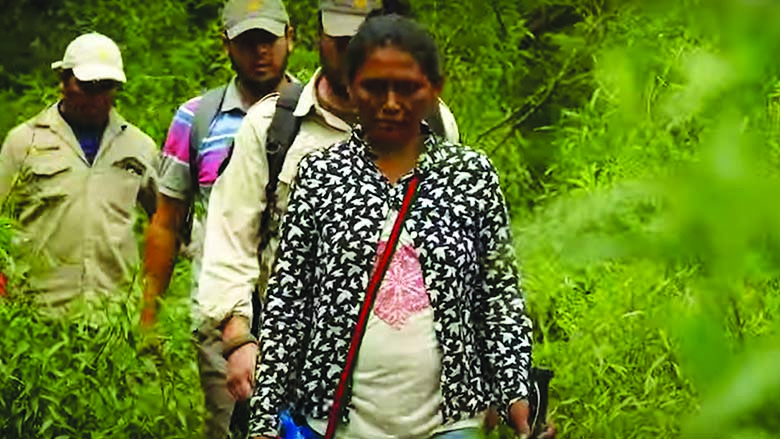For the local population, with limited income options, native and non-native honey production reduces pressure on forests, since it replaces, in part, the need to earn a living from charcoal, a practice that can deplete forests and produce negative health effects. At the same time, it strengthens local biodiversity by caring for the forests that provide bee habitat. “The bee feeds on the flower of the quebracho, the carob tree, the lapacho and the garabato. This project is an opportunity to recover the forests we live in”… It helped producers become aware of nature as a source of resources beyond wood, campaigning with sawmills and woodcutters not to destroy the swarms and preserve them. Now the families know that the trees are home to the swarms, so they take care of the trees,” says Silvia Godoy from the Cooperative Union of Small Producers of Chaco (UNPEPROCH) of Pampa del Indio.
Challenge
Between 2001 and 2019, Argentina lost 15 percent of its forest cover, reaching a deforestation rate three times higher than the average for Latin America. Deforestation for agriculture and livestock are historically the major drivers of forest loss, especially in the Chaco region, where 87 percent of deforestation in the last 10 years occurred.[1] Some of the poorest and most isolated people in Argentina (often Indigenous and campesino) live in the Chaco, and they are heavily dependent on natural resources for their livelihoods. These forests, and therefore the livelihoods of the people living in and around them, are particularly vulnerable to encroachment and climate change.
Approach
The project sought to increase the protection of vulnerable natural areas and conserve biological diversity within the Gran Chaco Ecosystem, as well as in the Patagonian Steppe and Coastal-Marine Ecosystems. It aimed to enhance biodiversity resilience to climate change and protect forest carbon assets.
The World Bank worked with the Argentine National Parks Administration, adopting a “corridors approach” to conservation and productive use of lands. This approach was able to create greater continuity and connectivity among the country’s ecosystems, and to increase coherence in the protection of biodiversity through the national and provincial parks systems. This project implemented innovative investments in ecosystems friendly activities, including native and non-native honey production, nature-based tourism, and regenerative cattle-ranching (which closely manages where and for how long animals forage, building soil health and carbon stocks) to improve the livelihoods of local communities while preserving local ecosystems and enhancing biodiversity resilience to climate change.
Honey from native bees was approved by Argentina’s food administration and technology to support its production was developed with the project support, opening up new opportunities for its commercialization. Organic production of non-native honey from local forests was also certified for international markets, bringing new and increased value to nature and ecosystem services and consequently empowering local communities to protect these ecosystems.
Results
The project contributed to making the rural economy more climate-smart by enabling rural communities to implement nature-based productive activities that led to the sustainable use of almost 200,000 hectares of native forests.
Other key results are:
- From 2015 to 2021, the project financed key infrastructure works and equipment, trained around 260 park rangers, and supported the design of nine protected areas management plans using participatory mechanisms, leading to 576,161 hectares achieving a better level of biodiversity protection.
- Governance at federal, national, and sub-national levels was strengthened by the reactivation of the Federal System of Protected Areas (SIFAP) and led to the development of a Common Action Plan in 2019. Nature conservation in protected areas supports climate change mitigation and adaptation.
- Until its closure, in December 2021, the project supported the introduction of sustainable landscape management practices for 195,227 hectares adjacent to protected areas in the conservation corridors. In those areas almost 1,000 people from local communities (45 percent women and 42 percent Indigenous) have received monetary or non-monetary benefits from the forests they live in.
- Between 2019 and 2021, three biodiversity conservation corridors were designed covering at least 4 million hectares (including 10 percent of the Chaco region in Argentina).
- During the entire project lifespan, climate change mitigation was pursued through the protection of 14.6 million tons of forest carbon.
[1] Ministry of Environment and Sustainable Development of Argentina. 2021. Native Forest Area Monitoring Report of 2020.
